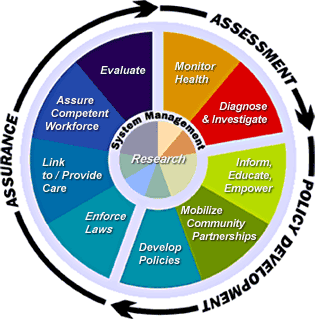Division of Environmental Health Services (DEHS)
Albuquerque Area DEHS Director – CAPT Carolyn Oyster
Albuquerque Area Office
4101 Indian School Road NE, Suite 225
Albuquerque, New Mexico 87110-3988
Office: 505-256-6815
Fax: 505-256-6852
Email: Carolyn.Oyster@ihs.gov
Program Mission
The IHS-DEHS is a critical part of the IHS preventive care programs. The purpose of the DEHS program is to address a wide range of environmental conditions in AI/AN homes and communities that contribute to high morbidity and mortality among Indian people. The environment, which includes the home, community, and the workplace, as well as the natural surroundings, is recognized as a vital factor in a person’s overall health and well-being. To guide this purpose, the IHS-DEHS program operates under the following mission statement:
"Through shared decision making and sound public health measures, enhance the health status and quality of life of all American Indians and Alaska Natives to the highest possible level by eliminating environmentally related disease and injury."
Program Management Philosophy
The Ten Essential Public Health Services provide a nationally-accepted framework to describe public health activities needed to achieve the goal of healthy people in healthy communities. The IHS-DEHS has adopted the Ten Essential Public Health Services and modified them to be the Ten Essential Environmental Health Services to define our program, clarify our role in public health, and plan our activities to achieve maximum public health benefits.
Current resources do not permit the DEHS program to accomplish anywhere near the estimated need for environmental health services. Priorities must be established to obtain the maximum benefit from the available resources.
The Division of Environmental Health Services has 3 general programmatic focus areas:
Activities Reporting and Data Management
The IHS-DEHS program has historically used a facility-based workload to define our services. The Facility Data System is now part of a more enhanced, web-based environmental health reporting system – WebEHRS. The WebEHRS has allowed staff to plan and self-manage assignments; and provides management with the tools to oversee local program service delivery, and report status and progress to tribal leaders and IHS Area and Headquarters.

The Albuquerque Area DEHS has also partnered with the Indian Health Performance Evaluation System, and developed a health and injury database to use for epidemiological reports and monitoring referred to as the Notifiable Disease and External Cause of Injury Reporting System or NDECI.
Future Direction
The DEHS has determined our service emphasis areas will revolve around the Healthy People 2010 Objectives where applicable; other standards and measurement criteria will also be used and/or developed.
By completely and effectively using the 10 Essential Environmental Health Services as the guiding principle, the DEHS will strive to deliver a comprehensive environmental public health program that improves the public health and quality of life for the American Indian population, and serves as a model for other health departments.
The Ten Essential Environmental Health Services
- Monitor environmental and health status to identify community environmental health problems.
- Diagnose and investigate environmental health problems and health hazards in the community.
- Inform, educate, and empower people about environmental health issues.
- Mobilize community partnerships to identify and solve environmental health problems.
- Develop policies and plans that support individual and community environmental health efforts.
- Enforce/Support laws and regulations that protect health and ensure safety.
- Link people to needed environmental health services and assure the provision of environmental health services when otherwise unavailable.
- Assure a competent environmental health workforce.
- Evaluate the effectiveness, accessibility, and quality of personal and population-based environmental health services.
- Conduct research for new insights and innovative solutions to environmental health problems and issues.


